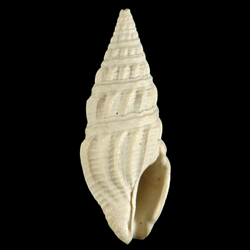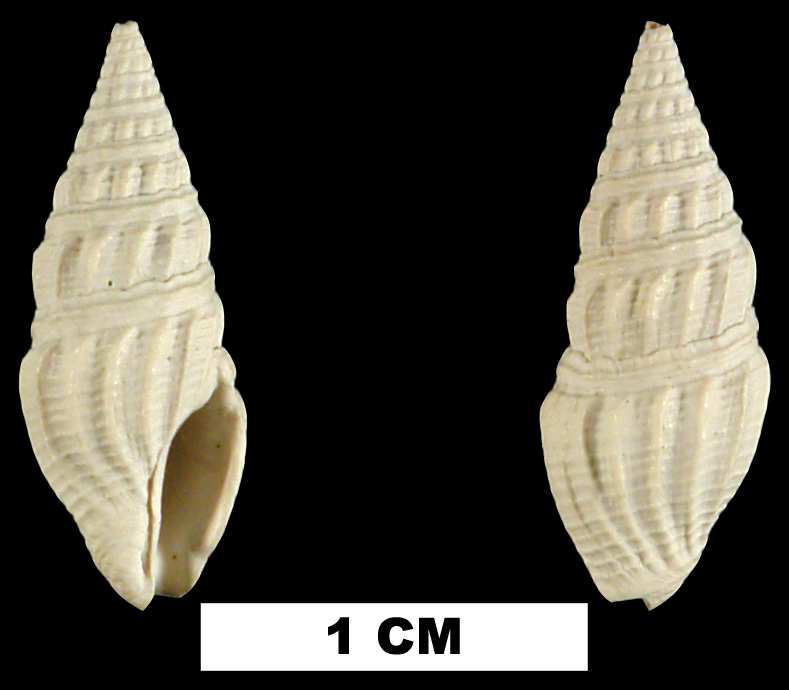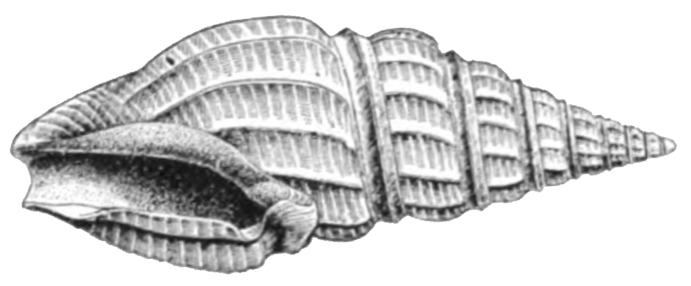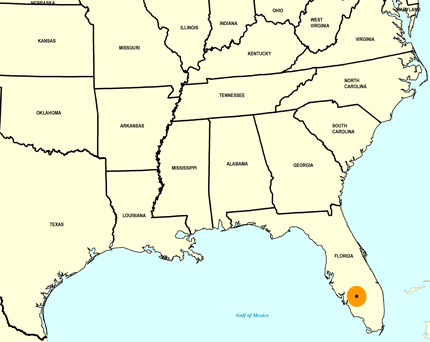
Drillia ebenina

- Phylum: Mollusca
- Class: Gastropoda
- Order: Neogastropoda
- Family: Drilliidae
- Genus: Drillia
- Species: Drillia ebenina Dall, 1889
Geological Range
Pleistocene (Early and/or Middle Pleistocene); Extinct.
Paleogeographic Distribution
Southern Florida.
Remarks
Original Description (from Dall, 1889, p. 33):
"Miocene of Santo Domingo (Gabb); Pliocene of the Caloosahatchie beds. Recent on the shores of the Gulf of Mexico, from Florida to Vera Cruz.
Shell stout, fusiform, spire acutely pointed, color (in the recent form) dead black, fading to very dark reddish brown; whorls eleven, of which two belong to the smooth dark brown nucleus, which is minute; last whorl more than half the shell; transverse sculpture (on the last whorl fifteen, beside the varix) sharp, slightly elevated flexuous ribs, with much wider interspaces, abrupt and largest where they begin in front of the fasciole and growing less conspicious to the canal; incremental lines perceptible, but not strong; varix large, rounded, swollen; spiral sculpture of fine, uniform threads, with wider interspaces, becoming coarser on the canal and more close-set toward the suture; these do not cut or nodulate the ribs on the periphery, but are well marked between them; behind the anal fasciole is a sharp, even keel with a space between its edge and the margin of the suture; suture inconspicuous, slightly appressed; aperture short, narrow; throat smooth; canal short, wide; pillar straight, with no umbilical chink and very little callus except opposite the notch; notch circular, subtubular, nearly closed in front, not as wide as the fasciole. Max. Ion. of shell 16.5; of aperture 7.0; of last whorl 10.0; max. lat. 6.5 mm.
This fine species was first found living in shallow water on the Florida Keys, by H. Hemphill. I find specimens of it together with several other species confused together under the name of Jamaicense Guppy in the Gabb collection at Philadelphia."
To access this description in its original formatting through Google Books, click here.
Stratigraphic Occurrences
- Early Pleistocene
- Caloosahatchee Formation (S. FL)


